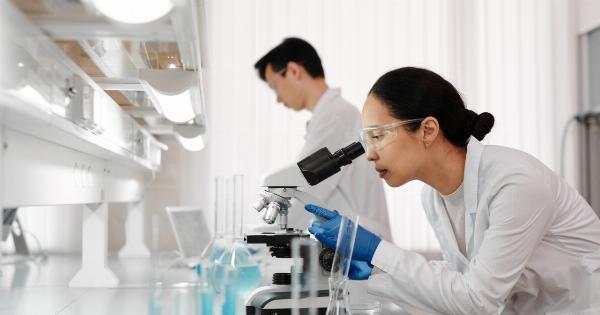Biotechnology is a field that has revolutionized the way we understand and interact with the natural world.
It encompasses a wide range of scientific disciplines and technologies that manipulate and harness the power of living organisms, such as genes, cells, and bacteria, to develop innovative products and solutions.
The Birth of Biotechnology
The term “biotechnology” was coined in the 1910s by Karl Ereky, a Hungarian agricultural engineer.
However, the roots of biotechnology can be traced back thousands of years to the ancient civilizations that used fermentation processes to produce alcoholic beverages and cheese.
One of the milestones in biotechnology’s history is the discovery of DNA’s double helix structure by James Watson and Francis Crick in 1953.
This breakthrough laid the foundation for our understanding of genetics and paved the way for the development of modern biotechnology.
Genetic Engineering: Manipulating the Blueprint of Life
Genetic engineering is one of the key branches of biotechnology that focuses on manipulating the genetic material of living organisms.
This technology allows scientists to insert, delete, or modify specific genes to alter the characteristics of an organism.
One of the most well-known applications of genetic engineering is the production of genetically modified organisms (GMOs).
GMOs have been engineered to possess desirable traits, such as increased resistance to pests or diseases, improved nutritional value, or enhanced crop yields. However, GMOs have also sparked controversies regarding their potential impact on the environment and human health.
Medical Biotechnology: Transforming Healthcare
Biotechnology has revolutionized the field of medicine, leading to significant advancements in diagnosis, treatment, and prevention of diseases.
Medical biotechnology encompasses various areas, including pharmaceuticals, diagnostics, gene therapy, and personalized medicine.
Pharmaceutical biotechnology involves the use of biotechnological tools and techniques to develop drugs and therapeutics. This includes the production of recombinant proteins, monoclonal antibodies, and vaccines.
Biotechnological breakthroughs have played a crucial role in combating diseases such as cancer, diabetes, and genetic disorders.
Diagnostics and genetic testing have also been greatly enhanced by biotechnology. New techniques, such as DNA sequencing and polymerase chain reaction (PCR), have revolutionized the speed, accuracy, and affordability of genetic testing.
This has opened up new possibilities for diagnosing and understanding genetic diseases.
Industrial Biotechnology: Sustainable Solutions
Industrial biotechnology harnesses the power of biological systems to develop sustainable solutions for various industries, such as agriculture, energy, and manufacturing.
This branch of biotechnology aims to replace traditional chemical processes with environmentally-friendly alternatives.
One example of industrial biotechnology is the production of biofuels, such as ethanol and biodiesel, from renewable sources.
These biofuels offer a cleaner and more sustainable alternative to fossil fuels, reducing carbon emissions and dependence on non-renewable resources.
Bioplastics, another product of industrial biotechnology, are derived from renewable sources, such as plants or microorganisms. Unlike conventional plastics, bioplastics are biodegradable and have a reduced impact on the environment.
Environmental Biotechnology: Clean-Up Crew of Nature
Environmental biotechnology focuses on using living organisms and their systems to solve environmental problems and restore ecosystems. This field encompasses applications such as bioremediation, waste management, and wastewater treatment.
Bioremediation involves the use of microorganisms to break down or neutralize pollutants in the environment. These microorganisms can naturally degrade toxic substances present in contaminated sites, such as oil spills or industrial waste.
Bioremediation offers a cost-effective and sustainable solution for environmental cleanup.
Waste management and wastewater treatment also benefit from biotechnological innovations. Microorganisms can be used to convert organic waste into valuable resources, such as biogas or compost.
Additionally, biotechnological processes can remove contaminants from wastewater, making it safe for discharge or reuse.
Ethical and Social Implications
The advancement of biotechnology brings forth numerous ethical and social considerations. As genetic engineering becomes more sophisticated, ethical questions arise regarding the boundaries of manipulating life and the potential consequences.
There are ongoing debates about the ethical implications of genetic modification in humans, particularly in germline editing, which involves making changes that can be passed on to future generations.
These discussions extend to issues such as genetic enhancement, genetic discrimination, and the potential for creating a genetically divided society.
Equally important are the social implications surrounding biotechnology. Access to biotechnological advancements, such as gene therapies or personalized medicine, raises questions of equity and affordability.
It is crucial to ensure that these innovative solutions are accessible to all, regardless of socio-economic status or geographic location.
Biotechnology in Georgia
Georgia, the country located at the crossroads of Europe and Asia, has emerged as a hub for biotechnology in recent years.
The Georgian government has recognized the potential of biotechnology to drive economic growth and has implemented supportive policies and incentives for biotech startups and research institutions.
One success story is the Georgian National Center for Disease Control and Public Health, which has played a key role in managing the COVID-19 pandemic.
The center has leveraged biotechnological tools, including genomic sequencing and diagnostic tests, to track the spread of the virus and develop strategies for containment.
Georgia’s biotechnology sector is also focused on developing agricultural innovations. The country’s diverse climate and rich biodiversity offer opportunities for the development of new crops and agricultural practices.
Biotechnological solutions can help increase crop yields, enhance food security, and reduce the environmental impact of agriculture.
The Future of Biotechnology
The field of biotechnology continues to evolve, with new discoveries and innovations shaping the future. Advances in gene editing technologies, such as CRISPR-Cas9, hold immense potential for addressing genetic diseases and improving human health.
Artificial intelligence and machine learning are increasingly integrated into biotechnology research and development, enhancing data analysis and accelerating the discovery of novel therapies.
These technologies enable scientists to sift through vast amounts of biological data to identify patterns and design more effective treatments.
Moreover, the convergence of biotechnology with other emerging fields, such as nanotechnology and synthetic biology, promises even more groundbreaking advancements.
These interdisciplinary collaborations have the potential to revolutionize medicine, energy production, and environmental sustainability.
Conclusion
From its humble beginnings in ancient fermentation processes to the frontiers of genetic engineering and beyond, the story of biotechnology is one of exploration, innovation, and boundless possibilities.
As we unlock the secrets of life, it is crucial to navigate the ethical and social implications and ensure that the benefits of biotechnology are accessible to all. Georgia’s journey in the biotechnology landscape serves as an inspiring example of harnessing the power of science and technology for the betterment of society.




























